Plumbing in a private house with their own hands: effective
Country house - the dream of many city dwellers, tired of the hustle and bustle of big cities. However, for a normal life in such a house, it is necessary to ensure the operation of the main communications: water supply, sewage, electricity. In this article we will talk about the installation of plumbing in a private house with their own hands.
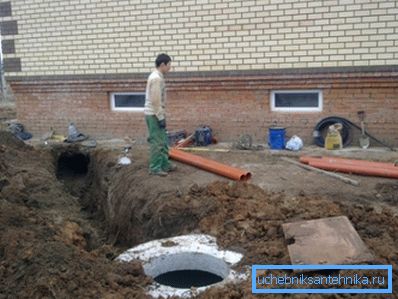
Water sources
Well

One of the most common sources of drinking water in rural areas is a well, so many owners of private houses use it as an element of autonomous water supply. It is desirable that this was a personal well, located on the site.
Most often, the depth of the wells does not exceed 4–8 meters, so a surface pumping station can be used to raise the water to the surface, the price of which is lower than that of submersible units.
If the length of the horizontal highway from the source to the house is small, then the station can be installed in the house. If the depth of the well is more than 6 meters, and more than 8 meters to the house - then the equipment should be located near the mouth.
Note! If the depth exceeds 8 meters, then only the submersible pump can handle the lifting of the fluid.
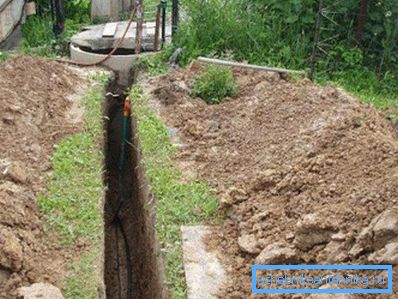
Let's list the features of using the well as a source for a house water supply system:
- Simplicity and comparative low cost of construction. You can build a well yourself in a fairly short time, for this you will need a shovel, buckets, a tripod with a winch and reinforced concrete rings;
- Not the highest reliability and safety. Wells are often polluted by flood and sedimentary waters, various animals can penetrate into them, algae and insects can start;
- The quality of water is not high, therefore, cleaning and liquid preparation systems are mandatory;
- Source resource is limited. Some wells serve 50 years or more, but this is far from the norm. In addition, the performance rarely exceeds 200 liters per hour, and after a large wash to take a bath will not work;
- The need for frequent cleaning and disinfection;
- Convenient and easy access allows you to easily remove foreign objects and perform maintenance;
- It requires constant water intake, otherwise it starts to silt.

Note! The choice of a well is often associated with financial constraints, since the cost of building an artesian well is very high, and a well for sand will cost 50 or more thousand rubles without equipment.
Well
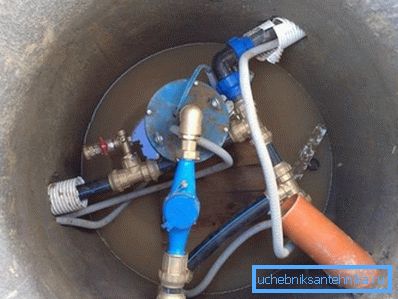
Quite widespread drilling for water supply. This is a more progressive and convenient way to get drinking water for a private enterprise, but it is more expensive and time consuming.
Three main types of wells should be distinguished:
- Shallow wells on the sand. The depth does not exceed 30 meters, the construction is carried out with the help of small-sized equipment in a short period of time (1-2 days);
- Abyssinian wells or driven wells. Depth - up to 8 meters, otherwise the pump will not be able to lift the water (the submersible unit is not installed in it). Requires soft soils and shallow aquifers;
- Artesian wells. The depth can reach 150 meters or more, the water is of very high quality, it rises to the surface itself, and the pump only creates the necessary pressure in the system. The most expensive type of source.
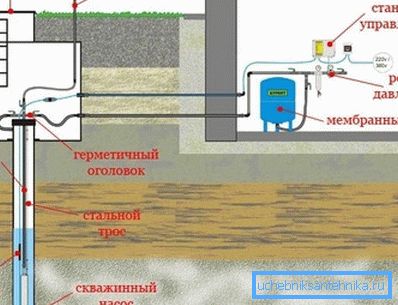
Note! Abyssinian wells are characterized by relatively low water quality, low productivity and a variety of conditions necessary for its normal operation. It is considered the cheapest and rare type of wells.
If you are not confused by the cost, then it is better to build an artesian source. It supplies the cleanest water, which is reliably protected from pollution by a vast stratum of rock and impermeable layers. Work on its drilling and arrangement will cost about 250 - 300 thousand, excluding the cost of equipment.
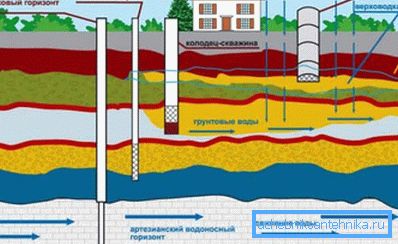
A well for sand is much cheaper, but its service life rarely exceeds 15 - 20 years. In addition, it is subject to seasonal variations in productivity and requires constant water intake, and in the case of silting, cleaning will be much more difficult than in the case of a well.
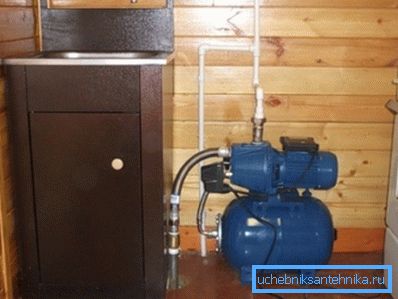
Note! The advantage of the Abyssinian source is that it can be erected right in the basement of the house, which saves you from having to maintain the external highway and warm the mouth.
External trunk

When the source is built, you need to hold the pipe from its mouth to your home. This is a very crucial stage, as any violation of the rules of laying the external highway will lead to the cessation of water supply at home and time-consuming long-term repair.
The main pipe is laid underground. This protects it from freezing and mechanical damage. Currently, low pressure polyethylene pipes are the most popular, as they are reliable, durable, easy to install and relatively inexpensive.
Consider the construction of an external conduit.
For example, we have compiled a step-by-step instruction:
- From the well or caisson to the point of entry of the pipe into the house a trench is dug out with a slight bias towards the source. Depth (for the middle band) - 1.5 - 2 meters. It is advisable to make a straight trench;
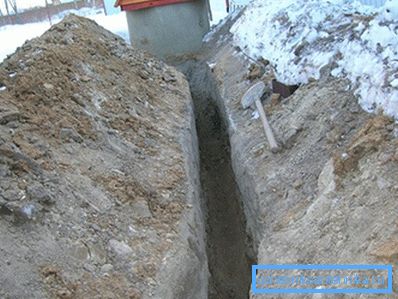
- The bottom of the trench is compacted and leveled. gravel-sand bedding;

- A hole is cut in the wall of the upper ring of the well or caisson with a diameter of 40 - 50 mm, in which a special glass for pipe insertion is mounted;
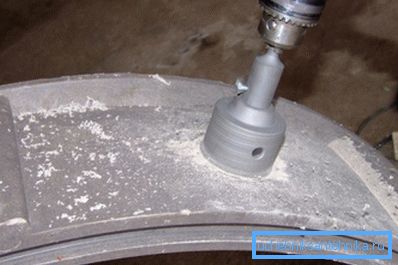
- A similar hole is made in the foundation wall. (if it is not laid during the construction phase), which should also be equipped with a sleeve to enter the pipe. The sleeve must be insulated and waterproofed;
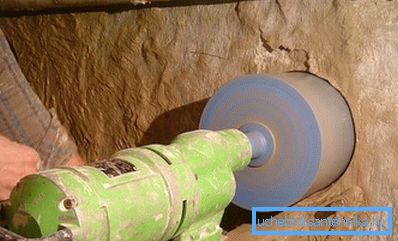
- Polyethylene PND-pipe with a diameter of 32 mm with one end of the plant into the house, and the other - into the well. In the well at its end a filter is attached and lowered into the water;
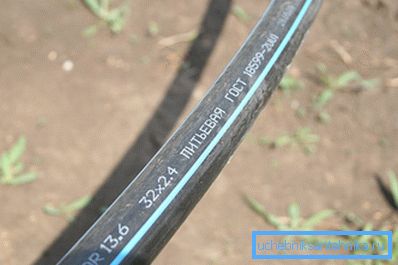
- The house pipe is connected to the pumping station;
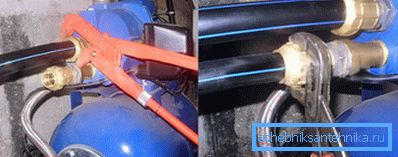
- The pipe laid on the bottom of the trench is covered with sheets of foam or other insulation and covered with earth.
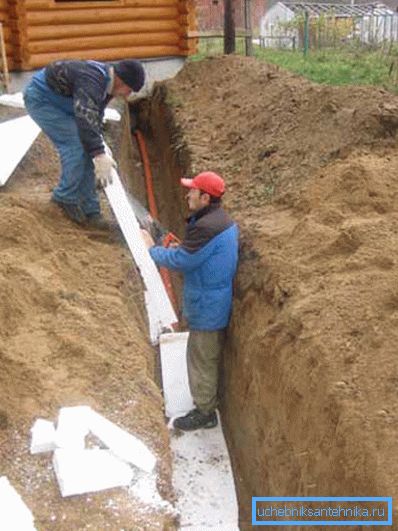
Note! Do not forget to put a non-return valve, otherwise the water will flow back into the well and the pump may begin to run dry.
Internal network

To build a plumbing in a country house with your own hands, you need to master the internal wiring of pipes.
It is of two types:
- Tee (consistent). On the floor is a horizontal lounger, from which, with the help of tees, connections to each device are branched. All devices are connected in series to one pipe;
- Collector (beam). The line is connected to the collector, from which the sun beds are allocated to each device separately. All devices are connected to the highway in parallel.
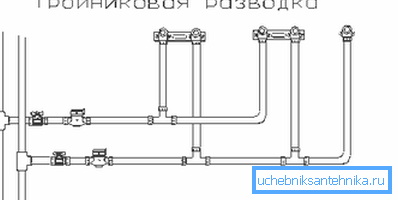
The tee scheme requires less material costs and less effort to install the pipeline. However, when two cranes are turned on at the same time, a serious drop in pressure is observed, which is unacceptable in houses with a large number of tenants and water intake points.
The collector circuit is devoid of this disadvantage, however, it is significantly more expensive due to the greater number of pipes and all kinds of fittings: valves, manifolds, pressure reducer, etc. In large houses and cottages, this scheme has no alternative.
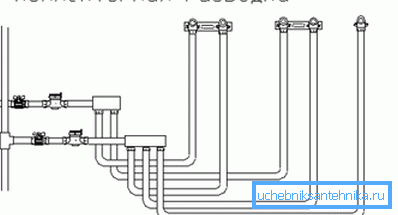
It is important to consider the necessary equipment:
- Hydroaccumulator for 50 - 200 liters, depending on the composition of the family;
- Ball valves at the input line and in front of each sanitary device;
- Water treatment and filtration system;
- For the collector circuit - pressure reducer;
- Boiler for hot water and cumulative boiler indirect heating;
- Mayevsky cranes for air evacuation;
- The tee after the filter - on the hot and cold line, after entering the house - for household and household needs.

Note! The pipe is laid along walls or under the floor. Polypropylene pipes are most popular today.
Conclusion
You can build a water supply system for a private house on your own, but you will need a lot of knowledge and equipment to work. If you do not want to hire specialists, then the video in this article will help you in this difficult task.